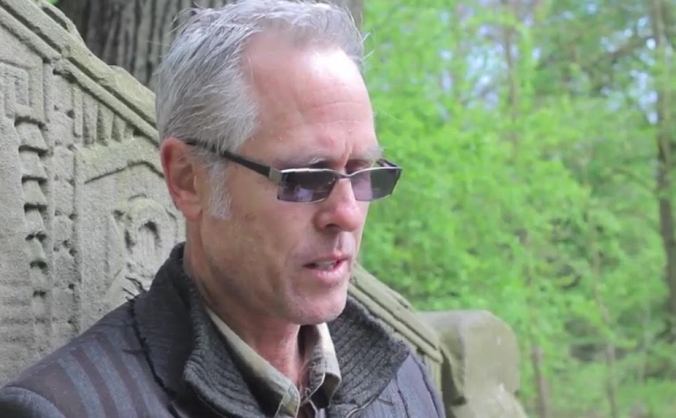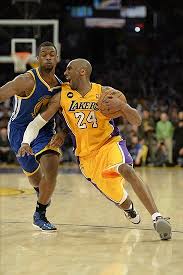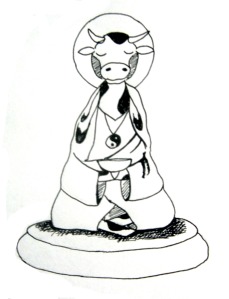How Misfits and Miscreants Can Benefit From All that Hippie Crap
 I tell a lot of stories. I mean A LOT. I used to tell my students to throw things at me if I became long-winded or began repeating things like I was in the beginning stages of Alzheimers. Of course they never would because my telling long stories meant for them that they wouldn’t have to do any work – just listen. The worst they would do was fall asleep. That to me just indicated that I should delete that one from the repetoire. But over the years, whenever I have the chance to talk to former students, they usually tell me they enjoyed my stories and remembered them more than anything else I taught. I think that’s a good thing. They’re either being kind or I was more like their drunk uncle than a teacher, always spinning yarns when we should’ve been ass-deep in textbooks. Regardless, I have accumulated a lot of stories over the years on just about every subject, but classroom anecdotes dominate.
I tell a lot of stories. I mean A LOT. I used to tell my students to throw things at me if I became long-winded or began repeating things like I was in the beginning stages of Alzheimers. Of course they never would because my telling long stories meant for them that they wouldn’t have to do any work – just listen. The worst they would do was fall asleep. That to me just indicated that I should delete that one from the repetoire. But over the years, whenever I have the chance to talk to former students, they usually tell me they enjoyed my stories and remembered them more than anything else I taught. I think that’s a good thing. They’re either being kind or I was more like their drunk uncle than a teacher, always spinning yarns when we should’ve been ass-deep in textbooks. Regardless, I have accumulated a lot of stories over the years on just about every subject, but classroom anecdotes dominate.
One of my favorites is this one, and you will no doubt recognize a line that runs through many of my stories: I love to teach the “bad” kids, the incorrigibles that most others have given up on. To me they are the most interesting, the most challenging, and they make you become a better teacher.
So years ago I took a position that only lasted one year and was completely experimental. To many it was a failed experiment, but to me it was the best year of teaching that I’ve ever had. It was at a school that was designed to give failing students one more chance. Normally in this school district, and throughout most districts in California, there is an unwritten mandate that you keep passing kids on, no matter what. Kindergarten through eighth grade is designed to more or less herd kids through the educational system and get them into high school. From high school, it’s a matter of a kid to accumulating credits or not, passing the exit exam or not, and that’s that. In high school, it’s up to the kid to make it through. Prior to that, it’s up to the state.
The position I took was at a school where all of the kids had failed miserably throughout middle school (grades 6-8) and were assembled in this one location and given one last shot at getting into high school. In other words, these kids were the worst of the worst. The principal who hired me had basically pleaded with me to come there and work some kind of voodoo magic, or any other kind of trick that would make this experimental project work out. I asked a lot of questions about what was possible, and she would just nod and say, “try it.”
So I did.
This was my year at the Long Beach Prep Academy, a school that sounded like anything but what it actually was. When I told people where I worked they would invariably ask, “Is that a school for smart kids?” Oh yes, it is, I would say, and leave it at that. I would not tell them that I had kids like Barry the Masturbator in my class, a Cambodian kid who had such an utter fascination with masturbating that he had to tell the world about it. Every day.
Upon entering the classroom he would often proclaim to the world how wonderful a masturbation session he had the night before, or even that morning. If I hadn’t have stopped him – or at least pleaded with him to stop – he would’ve told the whole class everything in detail.
“Barry, that’s enough. Please stop.”
“But I LOVE it. It feels soooo good.”
Years later, I would encounter Barry working as a cashier at Old Navy and he just stared at me.
“You don’t remember me, do you?” He asked.
“No, I’m sorry, I don’t.”
“I’m Barry.” Pause. “From the Prep Academy.”
It all came flooding back to me. Barry the masturbator. All of the drawings, stories, graffiti, and incessant comments made about masturbation that year.
“Oh yes, I do remember you. Hi Barry, how are you?”
He just smiled a Cheshire grin and continued scanning my purchase. He might’ve been somewhat embarrassed, but I somehow doubt it. He never was then, and I don’t think his character would’ve changed much. Barry, and most of the other kids I taught that year, were true characters. They had lived hard lives and their experiences had forged them in ways contrary to how a normal, pampered life leaves a kid soft, frail, unsure.
I had one student, Martha, who had not spoken to anyone in years. She was mute. She showed up every day to class, sat there, listened, but would not speak. It became my personal mission that year to get her to utter a single sentence. It never happened.
Edgar was the bane and love of my teaching experience that year. He epitomized the Prep Academy. A cop once walked onto the campus – which was an everyday occurrence – and asked about Edgar. It was the first kid he spotted.
“What’s that kid’s story?”
“Edgar? Well…”
“Nevermind,” the cop said. “I’ll tell you what I already know, just by looking at him. He’s about 13, already in a gang, lives on the west side, spends most of his time on the streets, and if I went up to him right now and searched him I’d find enough contraband on him to put him in jail.”
Hell, if that cop would’ve continued, he probably could’ve told me Edgar’s address, social security number, and entire rap sheet.
“Uh, yeah, that’s pretty much Edgar.”
So there were many, many other similar students with similar, troubled profiles. To omany to mention, but these are the kids and this was the school that provided years of storytelling opportunities – not because I ever wanted to parody, mock, or degrade any of these kids, in fact, just the opposite: I loved telling their stories because of the remarkable turnarounds that these kids made that year. For example, even though Martha never spoke, she did write. She allowed me into her world through journaling. She confided in me things that I never passed along to anyone else that enabled her to finally trust an adult. She had had a traumatic childhood, to say the least.
And Edgar, even though he threatened my life on one occasion, would always seek me out later and apologize for being so angry, and for taking it out on me. In the end, he turned out to be a very sweet kid, with a heart of gold.
Anyway, I had all of these kids assembled in my class that year and we were given a district mandate to have them read for at least twenty minutes a day. This is not at all uncommon, and not a bad idea by any means. I love to read and I want nothing more for kids to do than to be able to read and to love reading. But the task of getting these particular kids to read seemed insurmountable.
I tried everything, and nothing worked. During these twenty minute Silent Sustained Reading (SSR) sessions, my classroom was like Bedlam. It might start out small, like a pencil being thrown, then someone would do a fake cough, then someone else would fart, then everything would just go to hell. Daily.
So one night I got an idea. Since nothing else had worked I wasn’t afraid to try anything. I was sitting at home thinking about a plan. It was late at night and I had a candle burning. I looked at the candle and had one of those Newtonian epiphanies. So the next morning, I gave it a try.
I stood in front of my beautiful miscreants and placed the candle in the center of the class. Then I took a disposable lighter out of my pocket. When I did that of course the comments began.
“Are we gonna get high?”
“Do you smoke?”
“Want some weed? My shit’s really good.”
I’m sure it is. “Just watch,” I said. “I’m going to light this candle, and I want to know before I do that, how long do you think you can stare at it?”
“I don’t want to stare at no damn candle.”
“But if you did, how long?”
“Forever.”
“Forever? Really? Wanna try? The only this is this: you can’t look away, and you can’t make any sounds. I’m going to time you, and as soon you do either of those two things I’m going to stop the clock.”
The first attempt lasted about two seconds before someone did a fake fart. It was probably Barry, but I’m not sure. I know it wasn’t Martha.
I asked if that was the best they could do, and they said no. And at that point some of the kids that wanted to play the game told others to shut up. So I tried again. It lasted about ten seconds before someone laughed. I kept repeating the exercise because each time someone did something stupid I watched and listened to the others scold them and try to get them to focus and concentrate – and stop blowing it for the rest of the class. Some of these kids were getting into this and keeping the others in check. So I proceeded.
They finally focused so long on the candle that I couldn’t stop them. Five minutes. Ten minutes. Twenty minutes. The next day they wanted to do it again. A couple of days later they were going on thirty minutes or so when the principal walked in. She was expecting to see and hear what she normally witnessed in these classes: a bunch of kids bouncing off the walls, acting completely insane. Instead, she walked into a class that was sitting silently staring at a candle. I could tell by the look on her face that she wanted to know just what the hell was going on. I walked over and whispered that I’d explain later. The class knew that they were being observed and purposely went on this way for 45 minutes before I stopped them.
It was then that I debriefed them on what this was all about, that it wasn’t about staring at a candle at all. It was about concentration and focus. Prior to this little experiment, they were convinced that none of them in that class could sit with a book and focus on it for twenty minutes. But yet, they just focused on a candle for 45 minutes. I reasoned with them that if they focus on something as boring as a candle for that long, they could certainly focus on something like a book – which is much more interesting – for at least that long.
They soon gave it a try. Of course they quickly forgot my debriefing talk and wanted to keep playing “the candle game,” but I kept steering them in the direction of applying it to books. Some of them got it, and they were the same ones who got them on track with the candle game in the first place. Soon, instead of fake farts and pencil throwing, I heard kids whispering, “Shhh, I’m trying to read” and “Be quiet, stop talking to me, and read your own book!” And when new kids were added to the class, I would overheard students explaining SSR and the candle game and focus and concentration, and why it was important to read. It was absolutely incredible.
Later on, I did finally talk with the principal about the whole lesson. The first thing she said to me when I entered her office was “What did you do, give them Valium?” After I explained what happened, she asked me to tell the rest of the staff. So I did. The funny thing was, nobody else had any success with it whatsoever. And this gets back to the most important thing in teaching: relationships. If you don’t have the kind of relationship with your students to try this kind of offbeat experiment, it will most likely fail. My students knew that I was prone to try these kinds of things with them and they trusted me enough to let them know that I was doing them for one reason: to help them. Without that trust, they would never have allowed it to happen. And a teacher needs the students’ trust as much as the students need the teacher’s. It has to work both ways.
This “staring at a candle” exercise also reminds me of a book length essay on reading by Sven Birkerts called The Gutenberg Elegies: The Fate of Reading in an Electronic Age. In short, it details how reading a book requires “vertical” concentration rather than “horizontal”. The difference being the depth one goes to glean understanding. It’s commensurate to the time that’s afforded it, as well as other factors such as level of vocabulary and thought-provoking ideas. Gutenberg also goes into the comparison of reading books with that of meditation, how the heart rate slows, the body relaxes, and the mind loses track of conscious time. Also, as people develop the love and practice of reading, as with meditation, they develop stamina and are able to practice longer and longer sessions.
I noticed with this particular group of students that ten minutes easily turned into twenty, then thirty, and so on. I had only allotted 20-30 minutes a day to this kind of reading, but these students were begging me to let them keep reading 45 minutes to an hour. How could I refuse? I also noticed that it was self-governing. This was a population that came and went with such irregularity that it made taking attendance the hardest task of all. Kids were running away, going to jail, being shuffled in and out of foster homes, getting pregnant, you name it. But I noticed that amidst this revolving door population, there would always be a core group of students who had gotten hooked on reading, and they would invariably govern the newcomers or recent returnees. On many occasions I’d hear them elicit reasons for why they should read, citing the discussions we’d had, even the Gutenberg examples and Nancy Allen pages that I had shared with them.
And these were my so-called incorrigibles? This activity of staring at the candle proved to be a pivotal moment, an unforeseen turning point in my teaching career and in the lives of these students. As much as I try not to dote on these kinds of incidents as being “huge” I know how rare they are, and they are the kind of moments that can take the arduous task of teaching to heightened levels exhilaration. Rarely have I ever felt better and more satisfied than when I’ve had a class join with me on my quest to becoming a teacher in every sense of the word. When it clicks, it truly is an unbelievable feeling of joy. I’m not a fisherman, but I imagine it’s like waiting all day for a fish to bite, never intending to catch the biggest fish of your life – but then it happens. You wait for it and wait for it, and then out of nowhere it appears and takes your line. Yet another reminder of Chopra’s definition of success“…the ability to fulfill your desires with effortless ease.” Think about it.
If you were to use Deepok Chopra’s definition of success and apply it to traditional education, the impasse becomes altogether clear. It won’t work in that environment. If you read his book, The Seven Laws of Spiritual Success, and were to apply that to the typical classroom, you might be accused of daydreaming, wasting time, or – the comment most often given to me when I was young – not using time wisely. Worse, you’d probably be reprimanded, humiliated, and punished. “Desire?” as part of the curriculum? I don’t think so. “Effortless ease”? Get back to work, work harder, stop goofing off! One chapter of his book, and a good portion of nearly all of his writings, is dedicated to meditation as a way to achieve peaceful inner visions that guide us to deep insights into who we are and want we need to do in our lives. His book certainly isn’t the only book in the world that points to this, almost all books about meditation point in this direction, only with different paths for how to get there. And he would be the first to concede, I’m sure, that his writings come from ancient texts, ancient wisdom. But even though we’re supposed to be teaching ancient wisdom in the form of classic literature in schools, to actually practice what the texts say in the classroom…well, that’s another thing altogether, akin to blasphemy or occult indoctrination. Can you imagine walking into a classroom of students all cross-legged on the carpet, relaxing in a deep, silent meditation? Even though I would love to see it, any parent, principal, or casual passer-by would no doubt wonder what the hell was going on, that I was probably leading students into some cultish activity and trying to brainwash them.
But this practice has achieved commonality amongst the majority of successful people who have turned to the practice of meditation to bring them peace, affluence, and balance in their lives. For many of them it is essential daily practice. My favorite film director (and I’m a huge movie buff) is David Lynch. Going to watch “Eraserhead” at midnight every Friday night at the Nuart Theatre in Santa Monica was a personal pilgrimage of mine. I loved it and I would drag my friends to see it with me. They all hated it. As a first date it was disastrous. But I couldn’t get enough of it. That was his first film, and when I saw it I was hooked. Since then I’ve seen everything he’s ever made, and I re-watch them all with awe. In any case, if you’re not familiar with his work, it will either frighten you or invite you into a strange dream-like realm in which you’ll feel comforted – if you embrace strange dreams like I do. Until I read his book, Catching the Big Fish, I never knew where Mr. Lynch got his ideas. Now I know. He meditates, and has for years. The way he describes his practice is like fishing. It is straightforward and simple: If you want to catch the little fish (the little ideas), you can skim the the surface. But if you want to catch the big fish (the big ideas), you have to go much deeper, you have to allow your mind the quietude – also like fishing – of being silent and waiting for the fish to come to you. I love the simplicity of David Lynch’s approach. He still speaks and writes like that weird kid from Montana that I’m sure most townspeople were afraid of. But to me he’s just another successful American who has arrived at meditation in his own way, at his own time.
I’m wondering if and when the practice will ultimately spread to all Americans. Hmmm…I look at that sentence and just smile. It sounds impossible. But if you don’t call it meditation, then it might have a chance.









